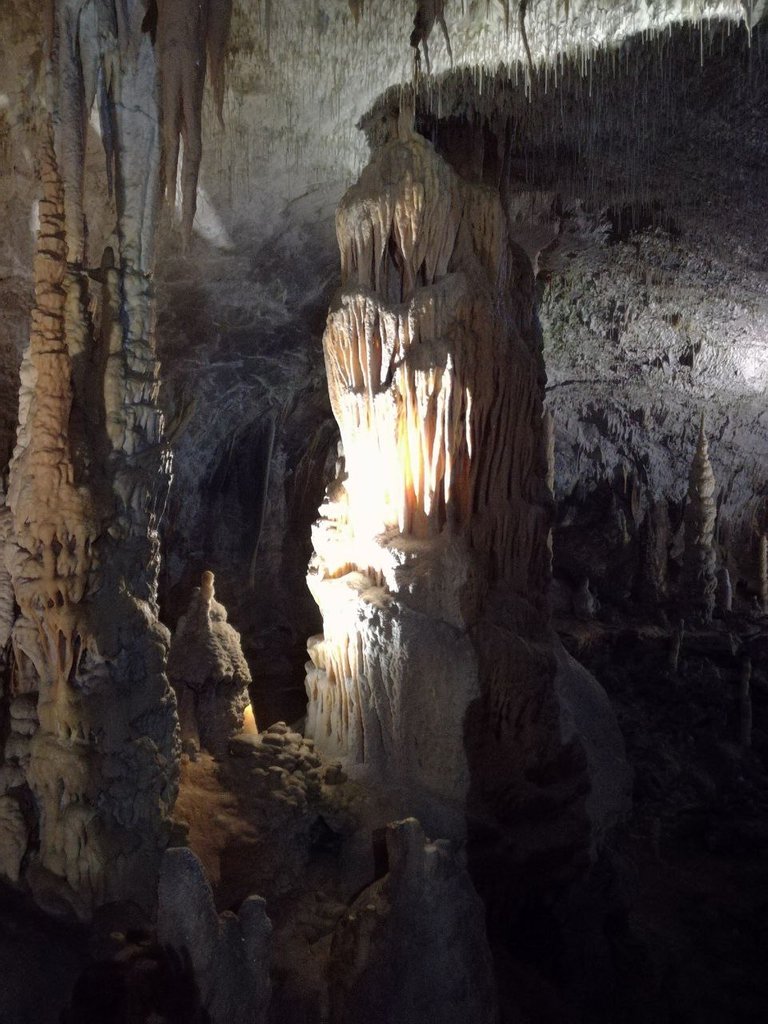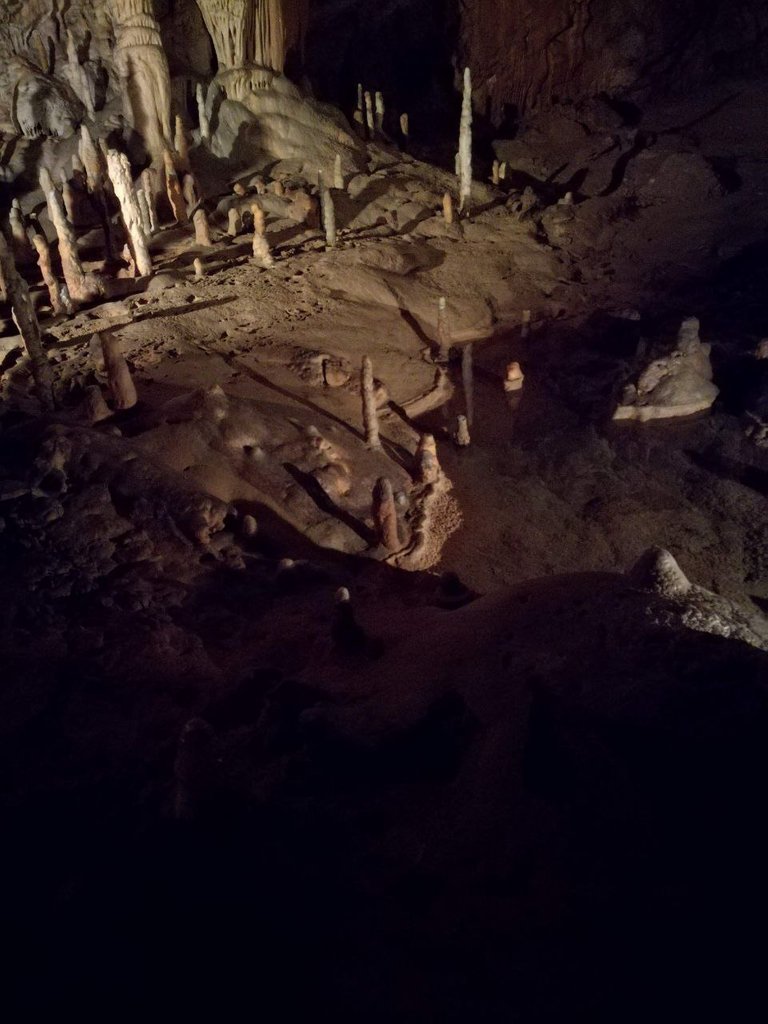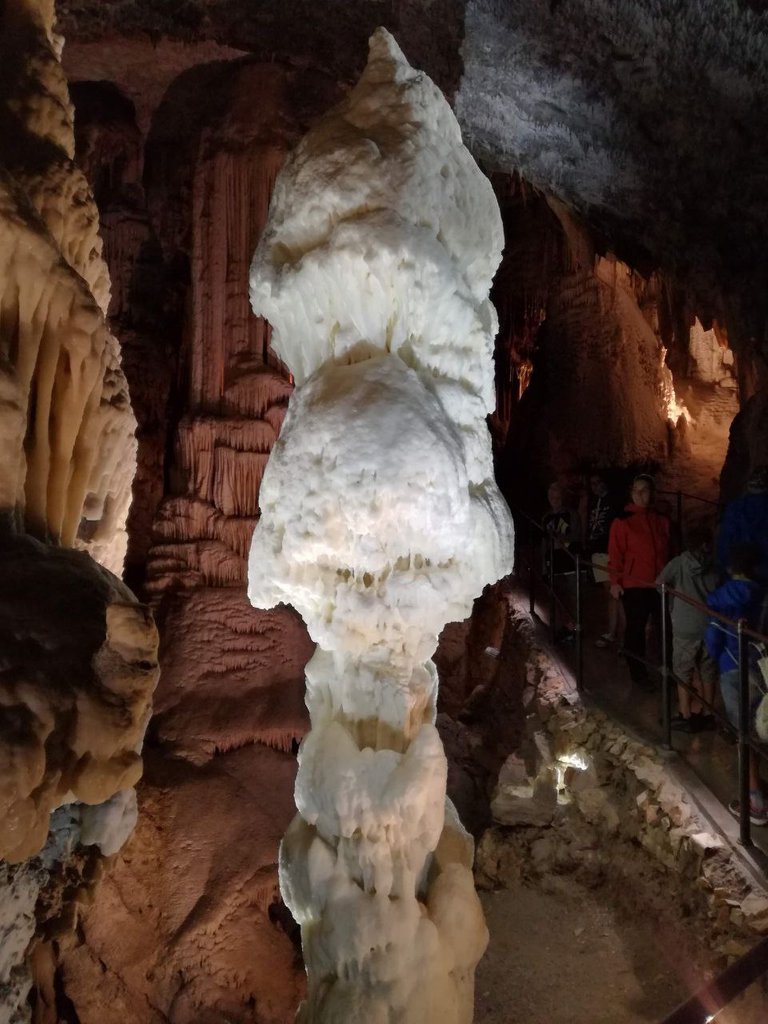Journey to the center of the Earth: the Postojna Caves
Hi all Hivers! We are going today, for another trip!
I think you have well understood that in addition to my passion for crypto and blockchain, nature also holds a certain fascination for me; in fact, I was in the process of pursuing my studies with a geological focus.
So today, I am going to tell you about an extraordinary journey to the center of the Earth; before you go, however, prepare your gear:
- Raincoat;
- Hiking shoes;
- A jacket that is not too heavy, but watertight;
- Camera.
If you don't have it, your smartphone is sufficient; take, however, a power bank: you will definitely need it.
The caves
Today's tour will deal with the karst phenomenon that is very active in Italian areas. By karst phenomenon we mean the formation of more or less large tunnels and rooms by water from both streams and rainwater.
In the surface we can hardly discern the presence of a possible cave, except for a more or less large chasm where the water opens its way to the underground. This chasm is called, in geology, a sinkhole.
Historical note: Living in Trieste, these sinkholes took the name Foiba derived from a Latin dialect term from the Julian area: fovea meaning, precisely pit or quarry.
The constructions that give rise to this water with its erosive force are true works of art. We will see it together along the way!
Postumia

Source: Google
The origin of these caves is due to the Pivca River, which in about 500,000 years managed to create a development of about 21 km of passages and rooms. At least of what speleologists have managed to discover!
Ticket done, shoes laced up, raincoat on your shoulders... well, off we go! I recommend a sweatshirt, the temperature down there is a constant 8 degrees and the humidity is over 95 percent!
The first part of the approach to the caves is done by a mine-style train: due to very narrow passages, it is recommended not to stand up at all, otherwise you will hit your head on the rock!

Source: Archive RRA Zeleni kras
This the little train that accompanied us, now we begin the walking tour.
Everywhere we turn our eyes we see purely roundish natural constructions of whitish color. These are referred to as limestone or calcium carbonate.
This salt is deposited by flowing water drops and they always deposit some; just think that it takes 20 years to make 1 mm of concretion!
The concretions we can see are of 3 types:
- Stalactites, are limestone concretions that descend from the upper part of the cave
- Stalagmites, are limestone concretions that start from the ground and rise upward
- Columns, when a Stalactite joins a Stalagmite
- Sails, when water flows down the walls or crevices in the rock. Given their characteristic shape they are also called "ham slices."
As you can see for yourself they are magnificent in all their conformations.

Source: Author
In the picture above we can see both stalactites and stalagmites even there are 3 columns.
A very important note consists in the difference between the composition of stalactites and stalagmites, in fact stalactites are cannulas, while stalagmites have no cavities and are full inside.
Stalagmites, which are more accessible to human beings, always have a wet surface: this indicates that they are "alive" i.e., active; in fact, cavers are advised not to touch them at all otherwise the fat on the skin risks making them "die."
The grease on the hands could create an impermeable patina that would prevent water from depositing the limestone and thus the process would stop.

Source: Author
In the picture above we see beautiful sail-like concretions; since their thickness is extremely small, as soon as they are hit by a light source, in transparency we can see their stratigraphy of different colors depending on the dissolved minerals.
For example, if we have a reddish hue, we are most likely in the presence of iron oxides.

Source: Author
We now come to nature's masterpiece: the column. In this cave the largest column is called "The Brillante."
As I said in addition to tunnels, the water also excavates entire halls, in fact there is an immense hall, which can hold up to 10000 people. This hall is called "The concert hall" because real concerts of classical music are held there, thanks to a great acoustics.
Be sure not to use flash when taking photos: the tendency to be very similar to natural light could give rise to the development of algae!

Source: Here
Now you will admire the spectacle of this cave in silence, where only the ticking of the drops of water building the stalactites could be heard.

Source: Author

Source: Author

Source: Author

Source: Author

Source: Author

Source: Author
We are nearing the end of the tour, how does it look so far?
I guess extraordinary, well and they are just photographs, try to think if you were there!
Of course all the photos were also experiments, which being there however the guide I ventured little, however the following photo is the example. It didn't come out perfectly, but you can see the drop of water -- the underground life. That very small thing that built everything you have seen in these photographs!

Source: Author
Meet the carpenter and engineer of this work of art!
We are at the end of the tour, but we haven't really seen everything. The cave is not only inhabited by water, there is also a living, albino, long-lived, primitive being: The Proteus.
Here he is, let me introduce him to you:

Source: Author
Despite the Proteus being blind, the photos were taken without the use of flash, and this can be recognized by the noise in the image.
The Proteus is a prehistoric animal that inhabits all karst caves; it is long-lived because it can live up to 100 years.
Its skin is white (albino) because it constantly lives in the dark and in the waters of the Generator River. Living in the dark, its visual apparatus is not developed at all.
Some time ago the biospeleologists of the cave built a special pool and placed two male and female specimens: in captivity it does not reproduce!
For this reason they set up an aquarium and inside it they put only one specimen that is periodically replaced so as not to stress this cute little animal!
I must say goodbye, we have come to the end of the tour, do you feel the heat outside that is warming our hands cooled by about 2 hours in the bowels of the earth?
I bid you farewell and see you again next time I will tell you about a magnificent castle carved entirely inside the rock a few kilometers from the caves.
For the ticket don't worry, it is cumulative with the one for the caves!
Bye everyone, see you at the entrance of the castle!
Wao, asombroso, gracias sentí como su hubiera estado allí
Thanks for stopping by, follow me we will do more hikes like this!
Your trip is very interesting, I really like these exploring trips, you have given me more knowledge. Thank you @mikezillo
Thank you for your appreciation!
If you like adventure stay alert, that we will do more expeditions!
!discovery 30
@tipu curate
Upvoted 👌 (Mana: 32/42) Liquid rewards.
This post was shared and voted inside the discord by the curators team of discovery-it
Join our Community and follow our Curation Trail
Discovery-it is also a Witness, vote for us here
Delegate to us for passive income. Check our 80% fee-back Program